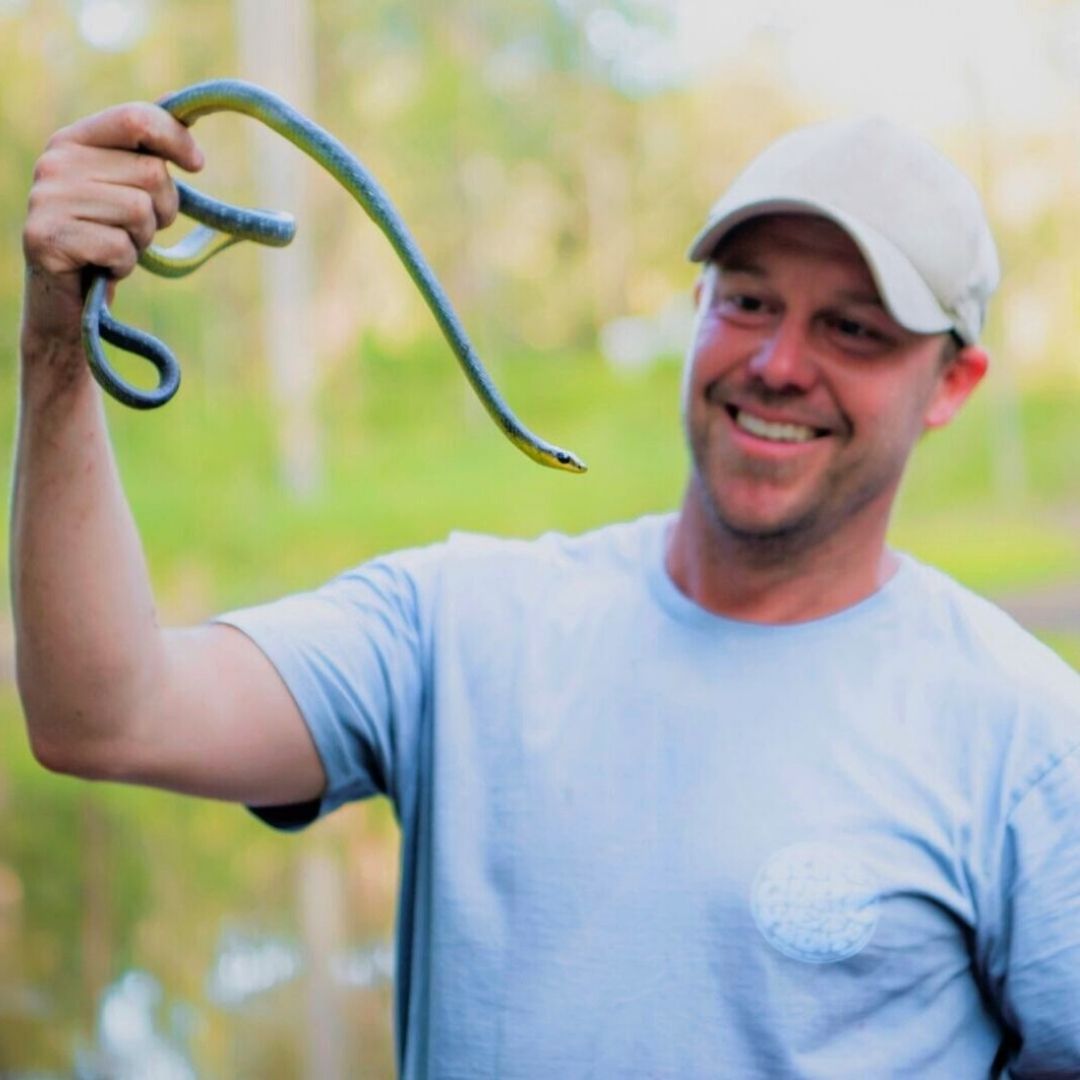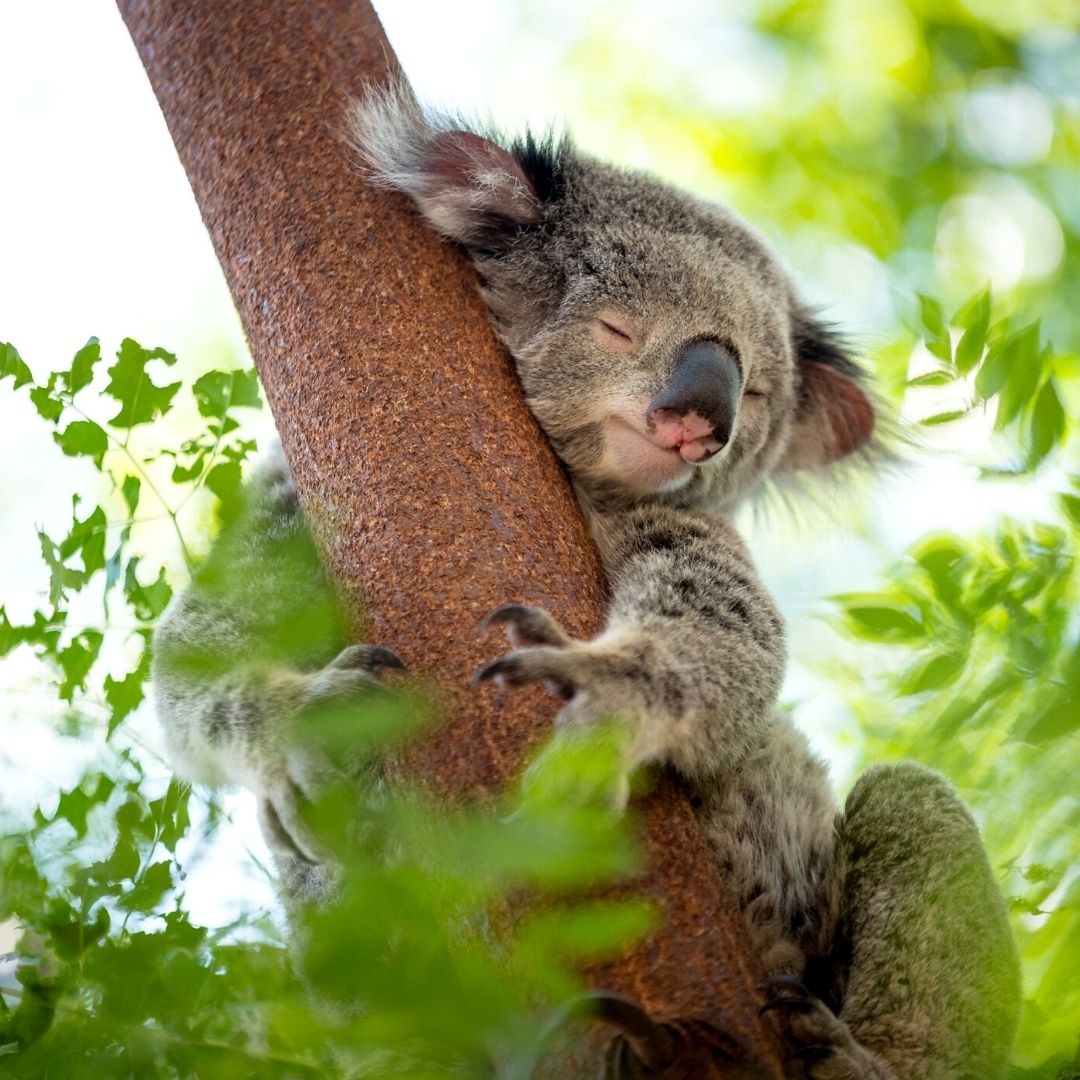Fantastic news! Australia’s wildlife conservation dream team — Aussie Ark, WildArk, and Australian Reptile Park — have partnered with Re:Wild to transform 1,500 hectares of land into a brand new wildlife sanctuary in NSW.
As a prominent partner of Re:Wild, actor and environmentalist Leonardo DiCaprio posted a fantastic video about the project on Twitter — watch it here!
Conservation Organisations Are Joining Forces In NSW
Who doesn’t love a good collaboration? Honestly, we can’t think of a better team than Aussie Ark, WildArk, Australian Reptile Park and Re:Wild! All fiercely determined to protect Aussie wildlife, creating the Mongo Valley Wildlife Sanctuary.
The soon-to-be sanctuary — located in Upper Mongogarie, NSW — contains 1,500 hectares of gorgeous, bio-diverse bushland. The old cattle farming land already supports a wide range of mammals, birds, reptiles, frogs and invertebrates!
“The procurement of Mongo Valley Wildlife Sanctuary and its transformation into a wildlife refuge is just another step in the right direction for Australian wildlife and conservation,” says Aussie Ark President, Tim Faulkner.


Mongo Valley Sanctuary Will Be Predator-Free
So, what’s the plan for Mongo Valley Wildlife Sanctuary? Well, the aim of the game is to create a predator-free area for native species to live safely and repopulate. The refuge will be modelled off the Barrington Wildlife Sanctuary in the Barrington Tops region of NSW, which has seen the successful return of Tasmanian Devils to mainland Australia!
Now that the 1,500-hectare property has been purchased, the next step is to create a predator-proof fence to ward off foxes, cats and other predators that can harm our native species.
Plus, the teams from Aussie Ark, WildArk and the Australian Reptile Park have been busy conducting wildlife surveys, starting weed management programs, and developing fire management strategies — critical to the success of the project.


Why Do We Need Wildlife Sanctuaries?
Did you know that Australia has one of the highest mammal extinction rates in the entire world? Every two minutes, we’re losing an MCG-sized area of forest and bushland. This extreme rate of habitat loss — along with drought, bushfires and feral invasive species — has led to the extinction of 55 wildlife species and 37 plant species.
We’re losing biodiversity at an alarming rate. That’s why the amazing people involved in this partnership are creating opportunities for our precious endemic species to survive.
To do this — “we work within a model of species recovery; the creation of insurance breeding populations; habitat recovery; the protection and restoration of Australian bush and rewilding, and the returning of species back to their homes,” says Tim.


Here’s How To Help Australia’s Native Wildlife
Our precious native species need our help! By establishing safe, predator-free havens for our native species, we can begin to rebuild these populations for generations to come.
“We’re working for the future of native wildlife. We need collaboration — help us bring balance back to the bush,” says Tim Faulkner. To do this, you can support the Mongo Valley Sanctuary by donating today. Your money will help build and maintain the sanctuary so our native species can thrive.
WildArk Founder, Mark Hutchinson, hopes we’ll see more sanctuaries over the next decade. “We hope that with the amazing support of Re:Wild, our staff, volunteers, ambassadors and donors, we can continue to acquire land for biodiversity and build a chain of wildlife safe havens across Australia."
The Mongo Valley Sanctuary offers so much hope for wildlife conservation in Australia; its unmatched ecological value and biodiversity must be protected! We’re so happy that Re:Wild, Aussie Ark, WildArk, and Australian Reptile Park are collaborating for such an amazing cause. If you love native Australian wildlife, our beautiful bushland, and good people doing good things — please offer your support for the Mongo Valley Wildlife Sanctuary.
We promise we’ll keep you updated on this amazing project. In the meantime, head to the Eco News category and check out the blogs below!
Tasmanian Devils Return To Mainland Australia
NSW’s New Outback Nature Reserve Will Protect Native Wildlife

